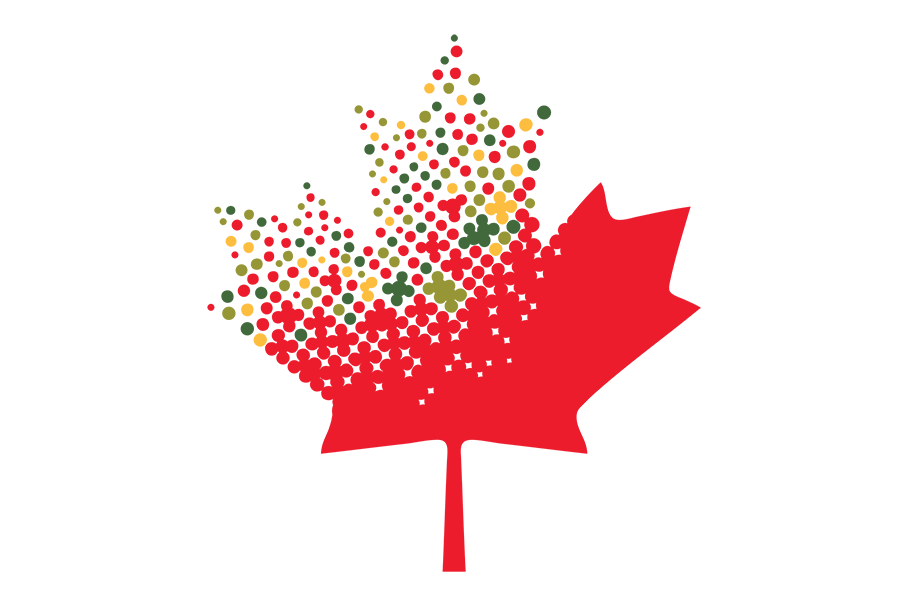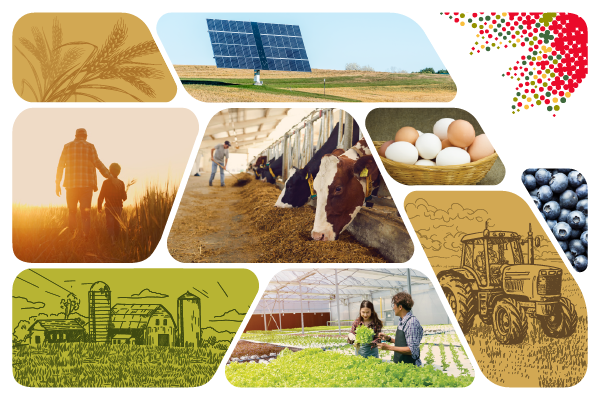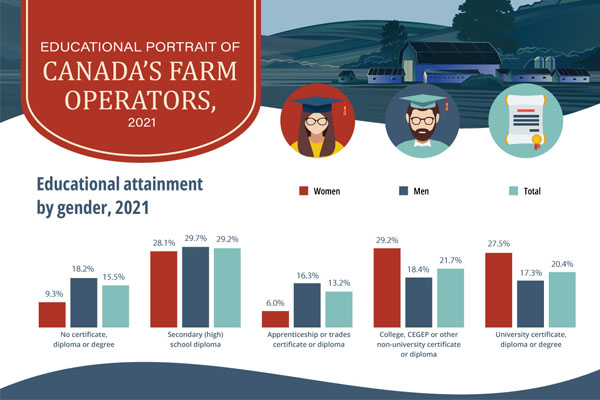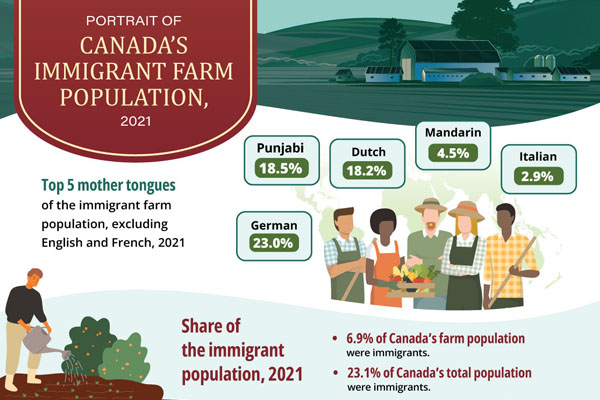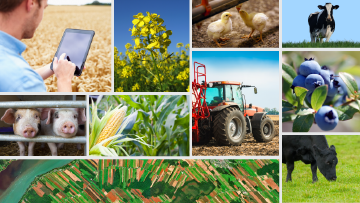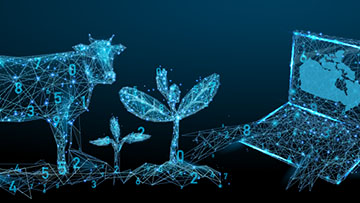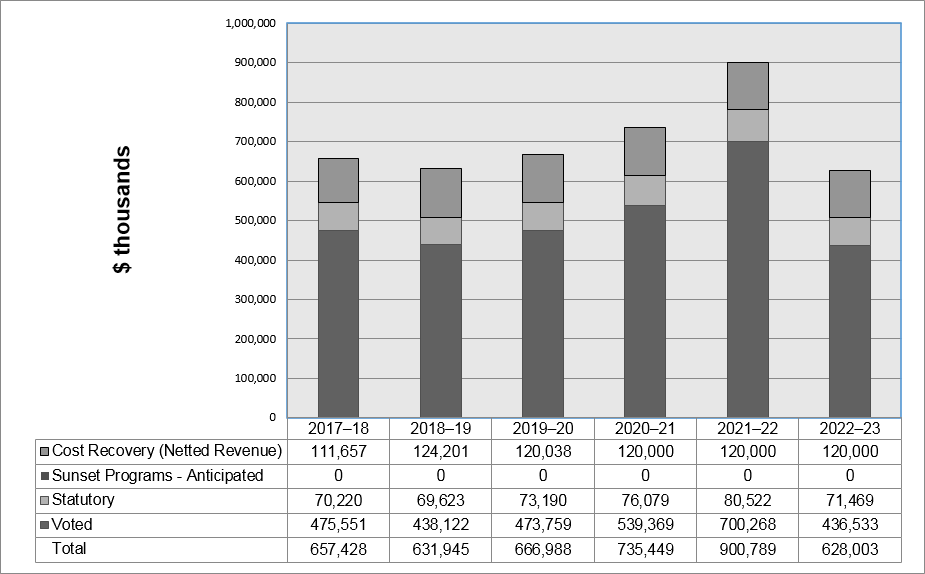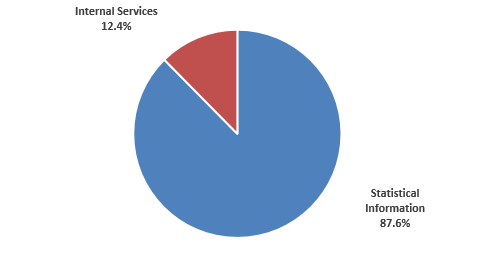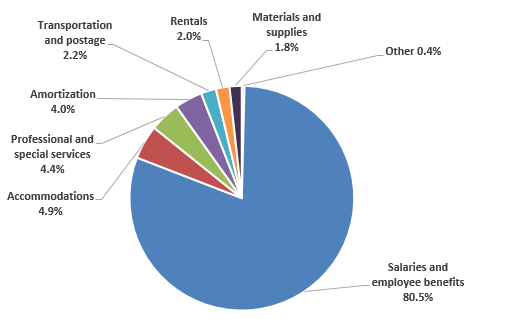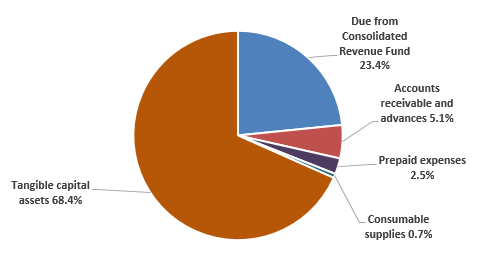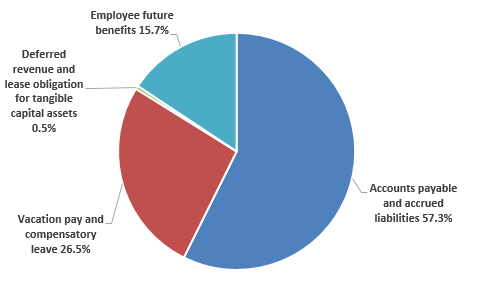Archived - Postsecondary Student Information System (PSIS) Record Layout, Files, and Data Element Descriptions 2019-2020
For use when reporting data for 2019/2020 and previous academic years
Tourism and the Centre for Education Statistics
December 2020
Postsecondary Student Information System (PSIS)
Record Layout, Files and Data Element Descriptions
Data Submission Information at a Glance
This information is collected under the authority of the Statistics Act, Revised Statutes of Canada, 1985, Chapter S-19.
Completion of this questionnaire is a legal requirement under this act.
Survey Purpose
The Postsecondary Student Information System (PSIS) is a national survey that enables Statistics Canada to provide detailed information on enrolments and graduates of Canadian public postsecondary institutions in order to meet policy and planning needs in the field of postsecondary education. The information may also be used by Statistics Canada for other statistical and research purposes.
Confidentiality
Statistics Canada is prohibited by law from releasing any information it collects which could identify any person, business, or organization, unless consent has been given by the respondent or as permitted by the Statistics Act. Statistics Canada will use the information from this survey for statistical purposes and research purposes.
Please note that in the following record layout, words designating the masculine gender include the feminine gender.
PSIS Database Structure
The PSIS database holds data at two (2) levels: (1) institution, program and course data; and (2) student data. The institution, program and course data includes a list of all public postsecondary institutions in Canada, and an inventory of all programs and courses offered through these institutions. The student data contains demographic, program, and course information for students registered at these institutions.
The information required to feed the PSIS database is stored in the six (6) PSIS data files, which are transmitted to Statistics Canada. The six (6) files describe either the student, or the institution and its available programs. The files and their interrelationships can be described as follow: The Institution Description file is linked to the Institution Program and Institution Course files whereas the Student Description file is linked to the Student Program and Student Course files. In addition, the Student Program file is linked to the Institution Program file and the Institution Course file is linked to the Student Course file.
Note to user: Data elements not in bold are those required to identify a unique record (each column corresponds to a file). Data elements required to link the files between them are identified by row. For example, the data elements required to link the ID and the SC files are: 1005/1000, 1025, 1035 and 1036.
| Mnemonic | Name | File | |||||
|---|---|---|---|---|---|---|---|
| ID | IP | IC | SD | SP | SC | ||
| RepStartYear | Year of start of report cycle | 1005 | 1000 | 1000 | 1000 | 1000 | 1000 |
| Instit | Institution code | 1025 | 1025 | 1025 | 1025 | 1025 | 1025 |
| Period (ID) / CourPer (SC) | Reporting period | 1035 | n/a | n/a | n/a | n/a | 1035 |
| Sub-period (ID) – CourSubPer (SC) | Reporting sub-period | 1036 | n/a | n/a | n/a | n/a | 1036 |
| ProgCode | Student's program code | n/a | 2000 | n/a | n/a | 2000 | n/a |
| CredenTyp | Credential type | n/a | 2010 | n/a | n/a | 2010 | n/a |
| CourCode | Student's course code | n/a | n/a | 3000 | n/a | n/a | 3000 |
| StudID | Institution's student identifier | n/a | n/a | n/a | 4000 | 4000 | 4000 |
| ProgStart | Original start date in program | n/a | n/a | n/a | n/a | 5010 | n/a |
| CourStart | Date student started course | n/a | n/a | n/a | n/a | n/a | 6020 |
Six (6) PSIS Input Files and File Description
Listed below are six (6) PSIS input files which you will need to submit in your annual report cycle (due by February 1, 2021). A brief description of each file is also outlined below.
- Institution Description (ID) file
- Institution Program (IP) file
- Institution Course (IC) file
- Student Description (SD) file
- Student Program (SP) file
- Student Course (SC) file
Institution Metadata
1. Institution Description (ID) file
(Postsecondary institution metadata; number of elements = 5; length = 132 bytes)
The Institution Description (ID) file lists and describes the different periods of academic activity by which programs and courses are organized. Specifically, the records contained on the ID file describe how a postsecondary institution divides its year into periods (sessions, terms, or other components) during which courses are commonly offered. Postsecondary institutions provide one (1) ID record for each period that begins or ends during the twelve (12) month report cycle. (For more detailed information, please refer to the Institution Description (ID) file section of this document.)
Please note that the information contained on the ID file is used to validate the Institution Code (element ID1025) provided to all of the six (6) PSIS files. It is also used to validate the period in which student courses are offered (element ID1035). Each period in which courses are reported on the Student Course (SC) file must also be present on the ID file.
2. Institution Program (IP) file
(Postsecondary institution metadata; number of elements = 11; length = 314 bytes)
The Institution Program (IP) file contains program code and program name (IP2000, IP2020), program duration (IP2070 and IP2071), credential type (IP2010) and other characteristics of each program offered by the postsecondary institution. The IP file is an inventory of the programs offered by the postsecondary institution. It contains one (1) IP record for each program offered during the twelve (12) month cycle.
Please note that there is a logical link between this file and the Student Program (SP) file. The SP file contains one (1) record for each combination of student and program. Each program code reported on the SP file must be present on the IP file. (For more detailed information, please refer to the Institution Program (IP) file section of this document.)
3. Institution Course (IC) file
(Postsecondary institution metadata; number of elements = 7; length = 260 bytes)
The Institution Course (IC) file contains course code and course name (IC3000, IC3020), course credits normally awarded and course credit units (IC3090, IC3091) and other characteristics of each course offered by the postsecondary institution. The IC file is an inventory of the courses offered by the postsecondary institution. One (1) IC record for each of the courses offered during the twelve (12) month cycle should be reported.
Please note that there is a logical link between this file and the Student Course (SC) file. The SC file contains one (1) record for each combination of student and course. Each course code reported on the SC file must be present on the IC file. (For more detailed information, please refer to the Institution Course (IC) file section of this document.)
Student Metadata
4. Student Description (SD) file
(Student metadata; number of elements = 37; length = 1018 bytes)
The Student Description (SD) file contains demographic and other descriptive information about the students attending the various postsecondary institutions. Among others, it contains student name (SD4040 to SD4050), birth date (SD4230), gender (SD4240), Social Insurance Number (SIN) (SD4020), contact information (SD4060 to SD4180), and characteristics such as whether or not the student has self-identified as an Aboriginal person (SD4210).This file contains one (1) record per student per postsecondary institution.
Please note that there is a logical link between this file and the Student Program (SP) file. The SD file contains one (1) record per student enrolled in a program or who has graduated from a program. (For more detailed information, please refer to the Student Description (SD) file section of this document.)
5. Student Program (SP) file
(Student metadata; number of elements = 17; length = 402 bytes)
The Student Program (SP) file contains one (1) record for each program in which the student was enrolled during the reporting cycle. The student program record includes the original dates in which the student started/ended a program (SP5010, SP5090), student status in program at end of report cycle (SP5100), specialization or major field of study (SP5015 and SP5016), total transfer credits (SP5220), cumulative credits for program (SP5230) and other characteristics of the student's program as recorded by the postsecondary institution.
Please note that there is a logical link between this file and the Institution Program (IP) file. Each program code reported on the SP file must be present on the IP file. In addition, there is a logical link between this file and the Student Description (SD) file. Each student record reported on the SD file must be associated with at least one (1) program record on the SP file. (For more detailed information, please refer to the Student Program (SP) file section of this document.)
6. Student Course (SC) file
(Student metadata; number of elements = 10; length = 258 bytes)
The Student Course (SC) file contains one (1) record for each course in which the student was enrolled during the reporting cycle. Also, include one (1) course record for students that are registered either in a CO-OP work term, writing a thesis, or performing any other academic activities related to their program but not structured as a course. The student course record includes the dates which the student started/ended the course (SC6020, SC6021) and status in course at end of report cycle (SC6030).
Please note that there is a logical link between this file and the Institution Course (IC) file. Each course code reported on the SC file must be present on the IC file. In addition, there is a logical link between this file and the Student Program (SP) file. Each program in which the student was enrolled (SP file) must be associated with at least one (1) course record on the SC file. The SP record for a student who graduates during the report cycle and for which the student did not have any course registrations during the report cycle (e.g., the student applies for and is granted a credential during the current report cycle for work completed in an earlier cycle) should not have an associated SC record. (For more detailed information, please refer to the Student Course (SC) file section of this document.)
Postsecondary Student Information System (PSIS)
Institution Description (ID) File
The following data elements are required to identify unique records: Start date of report cycle (ID1005), Institution Code (ID1025), Period Code (ID1035), and Sub-period Code (ID1036)
Record Layout, Files and Data Element Descriptions
First, select your start date of report cycle and store it in element ID1005. Please see the description of ID1005 for guidance on how to select your report cycle.
The Institution Description (ID) file lists and describes the different periods of academic activity by which programs and courses are organized. Specifically, the records contained on the ID file describe how a postsecondary institution divides its year into periods (sessions, terms, or other components) during which courses are commonly offered. Postsecondary institutions provide one (1) ID record for each period that begins or ends during the twelve (12) month report cycle. Periods can be of any length (although not many courses span twelve (12) consecutive months or more). Periods include the time allocated for exams. Your periods can begin before your report start date and can extend beyond the end of your report cycle. See data element ID1035, (Period Code) for suggestions on how to report periods.
Institution Code (element 1025 on all six (6) PSIS files)
You will find your code(s) on the list of postsecondary institution codes supplied by Statistics Canada.
Each eight (8)-digit code comprises a two (2)-digit province, a three (3)-digit postsecondary institution and a three (3)-digit campus. The list contains one (1) code for the parent postsecondary institution and one (1) for each campus. The parent institution code has 000 in the last three (3) digits, while the campuses are numbered sequentially beginning with 001. Postsecondary institutions without campuses have only a parent institution code. Examples: Postsecondary institution XXX in province P1 has two (2) campuses and postsecondary institution YYY in province P2 has none. Their codes would appear on the code list as follows: Postsecondary institution XXX includes P1XXX000 for Parent Institution; P1XXX001, Campus 1; P1XXX002; Campus 2; and Postsecondary institution YYY includes P2YYY000 for Parent Institution.
If your postsecondary institution has campuses, you can choose to report your PSIS data at the campus level or at the parent (000) level depending on how you store your postsecondary institution metadata and student metadata on your own administrative systems. We recommend reporting at the lowest level available, as more detailed analysis can potentially be done.
The following combinations of reporting level and file type are valid. Choose one (1) reporting level for all three (3) postsecondary institution metadata files and one (1) for all three (3) student metadata files; (i.e., do not combine parent- and campus-level reporting within the three (3) postsecondary institution metadata files or within the three (3) student metadata files).
Postsecondary institution metadata (ID, IP, IC) Parent Institution and Campus is paired with Student metadata (SD, SP, SC) Parent Institution and Campus.
| Element Number | Mnemonic | Name | Description | Codes | Type | Position | Size |
|---|---|---|---|---|---|---|---|
| 1005 | RepstartDate | Start date of report cycle | Your report cycle should start on the day after the end of your previous year's winter session (or academic year if you do not have a winter session), including the time allocated for exams. If your institution has no activity during the summer, only use September 1 as the start of your report cycle if your academic year ends on August 31. Possible scenarios (for illustrative purposes only; your data may vary) for the 2019/2020 report:
Postsecondary institutions that deliver programs only by non-traditional methods such as distance education, and therefore do not have a defined academic year or sessions, should use May 1 as their start date (or another date close to May 1 if more appropriate). Repeat the same value on all ID records. |
YYYYMMDD (YearMonthDay) | Text | 1-8 | 8 |
| 1025 | Instit | Institution code | Reporting PSIS postsecondary institution code | Refer to the Postsecondary Institution Codes in Section 4 of the document titled "PSIS Reporting Documentation 2019/2020". | Text | 9-16 | 8 |
| 1035 | Period | Period code | The ID file describes how the postsecondary institution divides its year into periods (sessions, terms, or other components) during which courses are commonly offered. Periods can be of any length (although, not many courses span twelve (12) consecutive months or more). Periods include the time allocated for exams. Provide one (1) ID record for each of your periods. Periods can start before the beginning of your report cycle (ID1005 above) and/or continue beyond the end of your report cycle. Use this element and the next one to record your own code or name you use to describe the period and sub-period. You can use both elements if a period is divided into shorter units. If not, leave the next element blank. Elements ID1035 and ID1036 are also used in the Student Course (SC1035 and SC1036) File to specify the period in which the student took the course. Example 1: a university offers courses during a spring/summer session, which it designates as SS, comprising an intersession (I) and a summer term (S); and during a fall session (F); and during a winter session (W); and during an academic year (AY). The university would report six (6) ID records having the following codes in this element and the next one: The ID file describes how the postsecondary institution divides its year into periods (sessions, terms, or other components) during which courses are commonly offered. Periods can be of any length (although, not many courses span twelve (12) consecutive months or more). Periods include the time allocated for exams. Provide one (1) ID record for each of your periods. Periods can start before the beginning of your report cycle (ID1005 above) and/or continue beyond the end of your report cycle. Use this element and the next one to record your own code or name you use to describe the period and sub-period. You can use both elements if a period is divided into shorter units. If not, leave the next element blank. Elements ID1035 and ID1036 are also used in the Student Course (SC1035 and SC1036) File to specify the period in which the student took the course. Example 1: a university offers courses during a spring/summer session, which it designates as SS, comprising an intersession (I) and a summer term (S); and during a fall session (F); and during a winter session (W); and during an academic year (AY). The university would report six (6) ID records having the following codes in this element and the next one: Period SS, no Sub-period; Period SS, Sub-Period I; Period SS, Sub-Period S; Periods F, W, AY; no Sub-period. Example 2: a college offers courses during a fall session, which it designates as FALL; a winter session (WIN); and the academic year (YEAR). The college also offers courses during two (2) half-semesters in the fall, which it designates FALL1 and FALL2, and, for the summer period, one six (6)-weeks and two (2) 4-week periods, which it designates SUM1, SUM2 and SUM3. The college would report a total of eight (8) ID records having the following period codes in this element and sub-period codes for the next element: Period SUM, Sub-period 1; Period SUM, Sub-period 2; Period SUM, Sub-period 3; FALL, no sub-period; FALL, sub-periods, 1, 2; Period WIN, no Sub-period; YEAR, no sub-period. The shorter periods could alternatively be coded SUM1, SUM2, SUM3, FALL1 and FALL2 in this element and the next element (Sub-period) will be blank. |
The postsecondary institution's code or name of the period within which courses are offered. | Text | 17-22 | 6 |
| 1036 | Sub_period | Sub-period code | Sub-period code during which courses are commonly offered. See previous element for more details. | The postsecondary institution's code or name of the sub-period. | Text | 23-28 | 6 |
| 1100 | ProvID | Provincial ID elements | Provincial ministries wanting to define additional elements for provincial reporting can use this composite element. Leave any unused portion of the 80 characters blank. | Components and codes as defined by provincial ministry. | Text | 53-132 | 80 |
Postsecondary Student Information System (PSIS)
Institution Program (IP) File
The following data elements are required to identity unique records: Year of Start of Report Cycle (IP1000), Institution Code (IP1025), Program Code (IP2000), and Credential Type (IP2010)
Record Layout, Files and Data Element Descriptions
The Institution Program (IP) file contains program code and program name (IP2000, IP2020), program duration (IP2060 to IP2071), credential type (IP2010, IP2011), educational entrance requirements (IP2150 to IP2155) and other characteristics of each program offered by the postsecondary institution. The IP file is an inventory of the programs offered by the postsecondary institution. It contains one (1) IP record for each program offered during the twelve (12) month cycle.
There is a logical link between this file and the Student Program (SP) file. The SP file contains one (1) record for each combination of student and program. Each program code reported on the SP file must be present on the IP file.
If students are taking courses without registration in a program, create as many non-program records on the IP file for each of the non-program categories appropriate to your institution (see element IP2015). This will involve:
- putting a program name in element IP2020;
- putting a program code in element IP2000;
- putting a value of "98 - Not applicable" in element IP2010;
- assigning the students to this program in the SP file; and
- following the instructions in the other elements for the assignment of "Not Applicable" code for this non-program record.
Please refer to the "Program type" and "Non-credit" entries of the Reporting Guide for Program Type and Credential Type for additional information on the non-programs.
Universities that store their program data with separate fields for degree and specialization(s) or major field(s) of study may be able to report just the degree code in element SP2000 and the student's specialization(s) or major field(s) of study in elements SP5015, SP5016 and SP5017 on the SP file. For example, if all BA programs have the same duration, credit requirement, provincial funding code, entrance requirements, on-the-job training (OJT) components, etc., then you could report only one (1) IP record for all BA's, with element IP2000 = "BA", and then show the different majors on the SP records of individual students. But if some of the BA programs have different durations or credit requirements, etc., then you must provide separate IP records for them. In these cases, you could combine the degree code and the specialization(s) or major field(s) of study in element IP2000 of the IP and SP records.
For programs that award two (2) credentials, please refer to the "Joint credential program" entry of the Reporting Guide for Program Type and Credential Type.
For programs that may lead to the option of several qualifications in terms of successful outcomes, such as one program (same code) which leads to a certificate or a diploma, please refer to the "programs with multiple exit options" entry of the Reporting Guide for Program Type and Credential Type.
For apprenticeship programs, provide one (1) IP record for each year or level of the program.
For the entire reporting period, describe all the programs offered during the twelve (12) months beginning on your Report Cycle Start Date.
| Element Number | Mnemonic | Name | Description | Codes | Type | Position | Size |
|---|---|---|---|---|---|---|---|
| 1000 | RepStartYear | Year of start of report cycle | The year in which the current report cycle starts. Assign the same first four (4) digits of the start date of the report cycle (as found in element ID1005 on the ID file). | YYYY (Year) | Text | 1-4 | 4 |
| 1025 | Instit | Institution code | Reporting PSIS postsecondary institution code. | Refer to the Postsecondary Institution Codes in Section 4 of the document titled "PSIS Reporting Documentation 2019/2020". | Text | 5-12 | 8 |
| 2000 | ProgCode | Program code | A program is a structured collection of educational activities (courses and other learning activities) arrayed to meet a set of learning objectives. A program "proxy" may be used in PSIS to identify educational activities which fall outside the definition of "program." Note: For degrees granted in Canadian universities, programs should fall within the parameters detailed in the Council of Ministers of Education, Canada (CMEC) Ministerial Statement on Quality Assurance of Degree Education in Canada (2007), which uses similar descriptors as those used in the Bologna process. Please refer to the Reporting Guide for Program Type and Credential Type for additional information on how to report programs. Please report the program code as stored in the postsecondary institution's administrative files. For more details, refer to element SP2000 on the SP file. All program codes on the SP file must be present on this file including the non-program record(s) as element Program Code is used as a key field to match record on IP and SP files. Universities that store their program data with separate fields for degree and specialization(s) or major field(s) of study may be able to report just the degree code in element IP2000 and the students' specialization(s) or major field(s) of study in elements SP5015, SP5016 and SP5017 on the SP file. For example, if all BA programs have the same duration, credit requirement, provincial funding code, entrance requirements, co-op requirements, etc., you could report only one (1) IP record for all BA's, with element IP2000 = "BA", and then show the different majors on the SP records of individual students. But if some of the BA programs have different durations or credit requirements etc., then you must provide separate IP records for them. In these cases, you would combine the degree code and the specialization(s) or major field(s) of study in element 2000 of the IP and SP records. The combination of the previous element (IP1025), this one and the next one (IP2010) constitute a key and therefore must be unique. Do not report duplicate combinations of these three (3) elements. |
None | Text | 13-32 | 20 |
| 2010 | CredenTyp | Credential type | The type of formal qualification awarded for successful completion of a program, excluding certificates of attendance. A "qualification" acknowledges successful completion of a program of study containing evaluative components. A "formal qualification" is a qualification that is recognized by an official body such as ministries of education, boards of governors or other ministry appointed bodies, federal departments or ministries, industry associations or sectors, apprenticeship and trades commissions, regulatory bodies or licensing agencies. Definitions of the categories: 01: A non-postsecondary credential awarded as a high school diploma or its equivalent. 02: A credential awarded and recognized by official bodies as a "certificate". 03: A credential awarded and recognized by official bodies as a "diploma". 04: This category must only be used to assign "degree" credentials which are supported by the Council of Ministers of Education, Canada (CMEC) Ministerial Statement on Quality Assurance of Degree Education in Canada. 10: Formal qualifications granted upon successful completion of programs that are shorter than programs where a certificate is the formal qualification awarded. 11: A credential granted upon completion of sixty (60) transferable credits of an undergraduate program. 97: A credential from programs that do not fit in any of the other categories. 98: This category is used for non-programs (where no formal qualification can be obtained), credentials for programs where the learning or performance is not measured or evaluated, such as for certificates of attendance, as well as for any other program where no formal qualification is offered. Please refer to the "Credential type" entry in the Reporting Guide for Program Type and Credential Type for inclusions, exclusions and additional information on each of the categories. If the same program can award two (2) credentials, one for completing a certain level and a higher one for completing a longer version of the program, then provide two (2) records having the same program code (element IP2000) but different values in this element; e.g., a program awarding a certificate after one (1) year or a diploma after two (2) years would have two (2) records for this data element, the first with code "02 - Certificate" and the second with code "03 - Diploma". For joint programs in which a student normally receives two (2) credentials, please refer to the "Joint credential program" entry in the Reporting Guide for Program Type and Credential Type to code the credential type. For programs offered under an agreement with another (other) institution(s), please refer to the "Programs offered under an agreement" entry of the Reporting Guide for Program Type and Credential Type to code the credential type. Please refer to Appendix B for acceptable reporting combinations between Credential type (IP/SP2010) and Program type (IP2015). |
01 - General Equivalency Diploma/high school diploma 02 - Certificate 03 - Diploma 04 - Degree (includes applied degree) 10 - Attestation and other short program credentials 11 - Associate degree 97 - Other type of credential associated with a program 98 - Not applicable |
Text | 33-34 | 2 |
| 2015 | ProgType | Program type | A classification of programs that is based on a combination of factors such as the general purpose of the program; the type of instruction offered in terms of educational content; and the expected outcome of the program. Definition of the categories: 01: Non-postsecondary programs that are offered in postsecondary institutions. 10: In-class or technical components of apprenticeship training when offered in postsecondary institutions. 20: Postsecondary programs that prepare students for entry into career, technical or pre-university programs. 21: Postsecondary skills programs that usually lead to a specific career path and into the labour market that is neither apprenticeship, pre-university, undergraduate nor graduate program. Educational requirements for this program are usually not greater than the secondary school diploma. 22: Postsecondary skills programs that usually lead to a specific career path and into the labour market and requires a certificate or a diploma from a career, technical or professional training program. 30: Postsecondary programs that prepare students for undergraduate studies but is not an undergraduate program. 40: Programs that prepare students for entry into a bachelor's degree program. It is an access or bridging option for a student who does not fully meet the requirements for entry into a bachelor's degree program. While this program does not generally lead to a qualification, some credits may be granted towards a bachelor's degree. 46: These are programs that are more academically-based programs which normally require a secondary school diploma or a college diploma in Quebec. Educational activities in these programs can be counted towards a bachelor's degree (applied, general or honours) or a professional degree. Undergraduate degrees normally allow entry into a second cycle graduate program. 47: Postsecondary programs that are not graduate programs and require a bachelor's degree for admission either explicitly or implicitly, such as is the case for concurrent bachelor's degree programs (where the outcome of these programs is equivalent to a program requiring a bachelor's degree, but the degree is not a requirement because of the concurrent nature of the program). In Saskatchewan and British Columbia, this category also captures postsecondary programs at the undergraduate level for which degree completion requires a scope beyond a bachelor's degree due to its breadth and depth of learning. 50: Postsecondary programs that prepare students for entry into a master's degree program. A bachelor's degree is normally required for entry into this program. 53: Postsecondary programs that prepare students for entry into a doctoral degree program, without the student being admitted to the doctoral program. 58: This category covers health-related residency programs. At a minimum, these programs require undergraduate degrees for entry. 59: Graduate programs that normally require a bachelor's degree. Educational activities in these programs can be counted towards a master's degree. Degrees from second cycle graduate programs normally allow entry into third cycle graduate programs. 62: Graduate programs that normally require a master's degree. Educational activities in these programs can be counted towards a doctoral degree. 63: Graduate programs that normally require a doctoral degree. Post-doctorate activities that do not meet the definition of a "program," such as those in the labour market, are excluded from this category. 89: Any postsecondary program that does not fit in any of the program categories listed above. 91, 92, 93 and 94: Categories that serve to identify students registered in educational activities without being registered in a program. It includes students enrolled in courses who have not declared a program of intent. 91: These are courses or other educational activities that are not within a program and have no evaluative component. 92: These are undergraduate courses or other educational activities not within a program and have an evaluative component. 93: These are graduate courses or other educational activities that are not within a program and have an evaluative component. 94: These are postsecondary courses or other educational activities that are neither undergraduate nor graduate, are not within a program and have an evaluative component. Please refer to the Reporting Guide for Program Type and Credential Type for inclusions, exclusions and additional information on each of the categories. Please refer also to Appendix B for acceptable reporting combinations between Credential type (IP/SP2010) and Program type (IP2015). For joint programs in which a student normally receives two (2) credentials, please refer to the "Joint credential program" entry in the Reporting Guide for Program Type and Credential Type. |
01 - Basic education and skills program 10 - Apprenticeship program 20 - Qualifying program for career, technical or pre-university 21 - Career, technical or professional training program 22 - Post career, technical or professional training program 30 - Pre-university program 40 - Undergraduate qualifying program 46 - Undergraduate program 47 - Post-baccalaureate non-graduate program 50 - Graduate qualifying program (second cycle) 53 - Graduate qualifying program (third cycle) 58 - Health-related residency program 59 - Graduate program (second cycle) 62 - Graduate program (third cycle) 63 - Graduate program (above the third cycle) 89 - Other programs 91 - Non-program (non-credit) 92 - Non-program (credit, undergraduate) 93 - Non-program (credit, graduate) 94 - Non-program (credit, other postsecondary) |
Text | 37-38 | 2 |
| 2020 | ProgName | Program name | The program name as stored in the postsecondary institution's own administrative files. | None | Text | 41-140 | 100 |
| 2070 | ProgDur | Program duration | The normal instructional time to complete the course work for the entire program for a full-time student by traditional program delivery. Use the next element (IP2071) to specify which unit of measure you are using. Use half-semesters (code 10), quarters or trimesters (code 12) or semesters or trimesters (code 15) if possible. Use weeks or months (code 08 or 09) only for programs shorter than one (1) year or for programs specifically organized in weeks or months. Use academic years or years (code 25 or 30) only if the program's courses are not delivered in shorter periods such as semesters or half-semesters or quarters. Exclude program segments that are mainly on-the-job training or field placement or co-op work terms. Leave this element blank only for non-program records and programs having no set duration, such as graduate programs. |
Blank or numeric value including decimal point and two (2) decimal places. e.g., 1016.50 = 1016.5 units required 1.00 = 1 unit required |
Numeric | 160-165 | 6 |
| 2071 | ProgDurUnit | Program duration units | Identifies the unit of measure used in the previous element (IP2070). Assign "98 - Not applicable" only for non-program records and programs having no set duration, such as graduate programs. | 06 - Hours 08 - Weeks 09 - Months (a period of about 30 days) 10 - Half-semesters (a period of about 2 months) 12 - Quarters or trimesters (a period of about 3 months) 15 - Semesters or trimesters (a period of about 4 months) 25 - Academic years (a period of about 8 months) 30 - Years (a period of about 12 months) 98 - Not applicable |
Text | 166-167 | 2 |
| 2080 | ProgCred | Credits needed to graduate | The number of credits or units of academic achievement required for graduating from or completing the entire program. Credits refer to the value that a postsecondary institution attaches to successful completion of a formal course of instruction and that can be applied by the recipient towards the requirements for a credential. Use the next element (IP2081) to specify which unit of measure you are using. If the program is not organized by credits but instead requires the successful completion of some number of courses, report the number of courses here and assign code "06 - Courses" in the next element (IP2081). Exclude credits for on-the-job training (OJT) segments that cover most or all of a semester or other period (e.g., co-op work terms). Leave this element blank only for non-credit programs or programs with no set credit or course requirements, such as graduate programs. |
Blank or numeric value including decimal point and two (2) decimal places. e.g., 1.00 = 1 unit required 1016.50 = 1,016.5 units required 10000.00 = 10,000 units required |
Numeric | 168-175 | 8 |
| 2081 | ProgCredUnit | Program credit units | Identifies the unit of measure used in the previous element (IP2080). Assign code "98 - Not applicable" only for non-credit programs or programs with no set credit or course requirements, such as graduate programs. |
01 - Credits 02 - Credit hours 03 - Semester hours 04 - Course hours 05 - Credit points 06 - Courses 07 - Student contact hours 96 - Other units 98 - Not applicable (non-credit program or no set credit requirement) |
Text | 176-177 | 2 |
| 2400 | ProvIP | Provincial IP elements | Provincial ministries wanting to define additional elements for provincial reporting can use this composite element. Leave any unused portion of the 80 characters blank. | Components and codes as defined by provincial ministry | Text | 235-314 | 80 |
Postsecondary Student Information System (PSIS)
Institution Course (IC) File
The following data elements are required to identify unique records: Year of Start of Report Cycle (IC1000), Institution Code (IC1025), and Course Code (IC3000)
Record Layout, Files and Data Element Descriptions
The Institution Course (IC) file contains course code and course name (IC3000, IC3020), course duration and course duration units (IC3080, IC3081), course credits normally awarded and course credit units (IC3090, IC3091) and other characteristics of each course offered by the postsecondary institution. The IC file is an inventory of the courses offered by the postsecondary institution. One (1) IC record for each of the courses offered during the twelve (12) month cycle should be reported.
There is a logical link between this file and the Student Course (SC) file. The SC file contains one (1) record for each combination of student and course. Each course code reported on the SC file must be present on the IC file.
For the entire reporting period, describe all the courses offered during the twelve (12) months beginning on your Report Cycle Start Date.
| Element Number | Mnemonic | Name | Description | Codes | Type | Position | Size |
|---|---|---|---|---|---|---|---|
| 1000 | RepStartYear | Year of start of report cycle | The year in which the current report cycle starts. Assign the first four (4) digits of the start date of the report cycle (as found in element ID1005 on the ID file). | YYYY (Year) | Text | 1-4 | 4 |
| 1025 | Instit | Institution code | Reporting PSIS postsecondary institution code. | Refer to the Postsecondary Institution Codes in Section 4 of the document titled "PSIS Reporting Documentation 2019/2020". | Text | 5-12 | 8 |
| 3000 | CourCode | Course code | The unique code for the course as it is stored in the postsecondary institution's administrative files; e.g., the course code "CHEM 101" might represent "Introduction to Chemistry". Include non-credit courses. In cases where a lab and a lecture have independent course codes in the postsecondary institution's administrative system, report separate courses on the IC file, e.g., "CHEM 101 Lecture" would be a different course from "CHEM 101 Lab". All course codes in element SC3000 on the SC file must also be present on this file. |
None | Text | 13-32 | 20 |
| 3020 | CourName | Course name | The course name as it is stored in the postsecondary institution's administrative files. In the above example for "CHEM 101", "Introduction to Chemistry" would be recorded here. | None | Text | 33-132 | 100 |
| 3090 | CourCred | Course credits normally awarded | The number of course credits or units of academic achievement normally awarded for successful completion of the course. Use the next element (IC3091) to specify which unit of measure you are using. If possible, use the same unit of measure as in elements IP2080 or IP2081 on the IP file. For non-credit courses or courses having no credit or course value assigned, leave this element blank and assign code "98 - Not applicable" in the next element. Also, leave blank for continuing education courses that do not count for academic credit. In some cases, the credits awarded for a course will vary from student to student depending on the student's program. In those cases, report the normal number of credits here and show the variation on the students' course records in element SC6060. |
Blank or numeric value including decimal point and two (2) decimal places. e.g., 1.00 = 1 unit awarded 16.50 = 16.5 units awarded |
Numeric | 145-152 | 8 |
| 3091 | CourCredUnit | Course credit units | Identifies the unit of measure used in the previous element (IC3090). | 01 - Credits 02 - Credit hours 03 - Semester hours 04 - Course hours 05 - Credit points 06 - Courses 07 - Student contact hours 96 - Other units 98 - Not applicable (non-credit course or course having no credit or course value assigned) |
Text | 153-154 | 2 |
| 3200 | ProvIC | Provincial IC elements | Provincial ministries wanting to define additional elements for provincial reporting can use this composite element. Leave any unused portion of the 80 characters blank. | Components and codes as defined by provincial ministry | Text | 181-260 | 80 |
Postsecondary Student Information System (PSIS)
Student Description (SD) File
The following data elements are required to identity unique records: Year of Start of Report Cycle (SD1000), Institution Code (SD1025), and Institution's Student Identifier (SD4000)
Record Layout, Files, and Data Elements Descriptions
The Student Description (SD) file contains demographic and other descriptive information about the students attending the various postsecondary institutions. Among others, it contains student name (SD4040 to SD4050), birth date (SD4230), gender (SD4240), Social Insurance Number (SIN) (SD4020), contact information (SD4060 to SD4180), and characteristics such as whether or not the student has self-identified as an Aboriginal (SD4210). This file contains one (1) record per student per postsecondary institution.
You are requested to provide one (1) record for each student registered at the postsecondary institution at any time between your Start Date of report cycle (ID1005) and the end of your winter term, or the end of your academic year if your postsecondary institution does not have a winter term. Also, include one (1) SD record for a student who graduates during the report cycle, even if the student did not have any course registrations during the report cycle (e.g., the student applies for, and is granted a credential during the current report cycle for work completed in an earlier cycle).
Also, include any students who were last registered in the previous report year and whose status in the program was "Unknown" at the time the previous year's Report was produced. The "Unknown" status refers to element SP5100 on the SP file: Status was unknown (under review or not yet determined or dependent on the completion or grading of courses that normally would have ended by the end of the report cycle). These students should be included in the Report to ensure that Statistics Canada can update their end status.
If the student was registered in more than one (1) program during the report cycle, provide only one (1) SD record and multiple Student Program (SP) records.
There is a logical link between this file and the Student Program (SP) file. The SD file contains one (1) record per student enrolled in a program or who has graduated from a program in the current reporting year.
| Element Number | Mnemonic | Name | Description | Codes | Type | Position | Size |
|---|---|---|---|---|---|---|---|
| 1000 | RepStartYear | Year of start of report cycle | The year in which the current report cycle starts. Assign the same first four (4) digits of the start date of report cycle (as found in element ID1005 on the ID file). | YYYY (Year) | Text | 1-4 | 4 |
| 1010 | RepTyp | Report type | Report F for an entire Full-year reporting period (twelve (12) months). | F - Entire Full Year reporting period | Text | 5 | 1 |
| 1025 | Instit | Institution code | Reporting PSIS postsecondary institution code. | Refer to the Postsecondary Institution Codes in Section 4 of the document titled "PSIS Reporting Documentation 2019/2020". | Text | 6-13 | 8 |
| 4000 | StudID | Institution's Student Identifier | The postsecondary institution's permanent identifier for the student while in this postsecondary institution. Use the same number for this student from year to year. | None | Text | 14-27 | 14 |
| 4010 | TStudID | Type of Student I.D. | Indicates the type of I.D. number reported in the previous element (SD4000). | 01 - I.D. number assigned by postsecondary institution independently of any provincial or national numbering system 02 - Provincial student Identification number |
Text | 28-29 | 2 |
| 4020 | SIN | Social Insurance Number | The student's Social Insurance Number (SIN) if the student is a Canadian citizen or permanent resident. Otherwise, leave blank. Do not report dummy SIN's. SIN's failing the check-digit routine will be deleted at Statistics Canada. | 9-digit SIN | Text | 30-38 | 9 |
| 4030 | PSIS_NSN | PSIS National Student Number | The PSIS respondents currently using this data element to report the provincial student number can continue to use it. | Text | 39-68 | 30 | |
| 4040 | FirstName | First name | Student's first (given) name. | None | Text | 69-108 | 40 |
| 4041 | MidName | Middle name(s) and/or initials | Student's middle name(s) and/or initials. If your postsecondary institution stores first name and middle name(s)/initials together as one (1) field, enter both in the previous element (SD4040) and leave this element blank. |
None | Text | 109-148 | 40 |
| 4042 | Surname | Surname | Student's surname (last name). | None | Text | 149-188 | 40 |
| 4050 | PrevSurname | Previous surname | Student's previous surname; e.g., name prior to marriage. If the postsecondary institution stores more than one (1) previous surname report the most recent only. | None | Text | 189-228 | 40 |
| 4060 | CurrPostal | Current postal/zip code | Student's postal or zip code while enrolled in the program or course(s). | None | Text | 229-238 | 10 |
| 4070 | CurrCntry | Current country of residence | Student's country of residence (where the student is living) while enrolled in the program or course(s). For most students this is Canada, but some students live in the U.S. and commute to Canada for classes, and others study by Distance Education from other countries. |
Refer to the Standard Classification of Countries and Areas of Interest Codes in Section 4 of the document titled "PSIS Reporting Documentation 2019/2020". | Text | 239-243 | 5 |
| 4071 | CurrCntryTxt | Current country of residence (Text) | Student's country of residence (where the student is living) as reported in the postsecondary institutions administrative records. Leave this element blank if the country code is reported in the previous element (SD4070). | None | Text | 244-273 | 30 |
| 4080 | CurrPhone | Current telephone number | Student's telephone number while enrolled in the program or course(s). Include the area code. | None | Text | 274-293 | 20 |
| 4090 | CurrEmail | Current e-mail address | Student's Internet e-mail address while enrolled in the program or course(s). | None | Text | 294-373 | 80 |
| 4100 | PermLine1 | Permanent address line 1 | Line 1 of the permanent address reported by the student on their application for admission or the most current address maintained by the postsecondary institution for follow-up surveys of students after graduation. Ensure that city/town, county, province, country and postal or zip code are reported in their own respective elements (SD4110 onwards) and not included in this element or the subsequent address lines. | None | Text | 374-428 | 55 |
| 4101 | PermLine2 | Permanent address line 2 | If applicable, line 2 of the permanent address. Lines 1 and 2 should contain all the address information up to but not including the city/town. See element SD4100 for more details. | None | Text | 429-483 | 55 |
| 4102 | PermLine3 | Permanent address line 3 | If applicable, line 3 of the permanent address. Note that this element is smaller than lines 1 and 2. See element SD4100 for more details. | None | Text | 484-513 | 30 |
| 4103 | PermLine4 | Permanent address line 4 | If applicable, line 4 of the permanent address. Note that this element is smaller than lines 1 and 2. See element SD4100 for more details. | None | Text | 514-543 | 30 |
| 4104 | PermLine5 | Permanent address line 5 | If applicable, line 5 of the permanent address. Note that this element is smaller than lines 1 and 2. See element SD4100 for more details. | None | Text | 544-573 | 30 |
| 4110 | PermCity | City or town of permanent address | City or town of the permanent address reported by the student on their application for admission or the most current city or town of the permanent address maintained by the postsecondary institution for follow-up surveys of students after graduation. | None | Text | 574-608 | 35 |
| 4130 | PermProvUpdt | Province or state of permanent address (updated) | Province or state of the permanent address reported by the student on their application for admission or the most current province or state of the permanent address maintained by the postsecondary institution for follow-up surveys of students after graduation. Assign ZY (Not applicable) for addresses outside Canada and the U.S. |
Refer to the Province and State Codes in Section 4 of the document titled "PSIS Reporting Documentation 2019/2020". | Text | 648-649 | 2 |
| 4150 | PermCntry | Country of permanent address | Country of the permanent address reported by the student on their application for admission or the most current country of the permanent address maintained by the postsecondary institution for follow-up surveys of students after graduation. | Refer to the Standard Classification of Countries and Areas of Interest Codes in Section 4 of the document titled "PSIS Reporting Documentation 2019/2020". | Text | 685-689 | 5 |
| 4151 | PermCntryTxt | Country of the permanent address (text) | Country (text) of the permanent address reported by the student on their application for admission or the most current country (text) of the permanent address maintained by the postsecondary institution for follow-up surveys of students after graduation. Leave this element blank if the code is reported in the previous element (SD4150). |
None | Text | 690-719 | 30 |
| 4160 | PermPostal | Postal or zip code of permanent address | Postal or zip code of the permanent address. | None | Text | 720-729 | 10 |
| 4180 | PermPhone | Telephone number at permanent address | Telephone number at the permanent address reported by the student on their application for admission or the most current telephone number at the permanent address maintained by the postsecondary institution for follow-up surveys of students after graduation. Area code must be included. | None | Text | 730-749 | 20 |
| 4200 | SensRec | Sensitive record | Identifies sensitive records. Report Code "1 - Yes" only for deceased students or students who might be endangered by being included in a follow-up survey, such as students who are under the witness protection program. If you do not carry this information, assign code "2 - No". | 1 - Yes, sensitive record 2 - No |
Text | 750 | 1 |
| 4210 | Aboriginal | Indigenous identity | Indicates the self-declared Indigenous identity of the student as defined by the Canadian Constitution which recognizes three groups of Indigenous peoples: First Nations (North American Indians), Métis and Inuk (Inuit). Depending on how your institution collects data on Indigenous students, First Nations (North American Indians) could include those who are 'Status' or 'Non-Status' Indians/First Nations. If the student reported being an Indigenous person without specifying the group, use code 7-Indigenous, group not specified. If the student did not report being an Indigenous, use code "8"-Not self-declared Indigenous". |
4 - First Nations (North American Indians) 5 - Métis 6 – Inuk (Inuit) 7 –Indigenous, group not specified 8 - Not self-declared Indigenous 9- Unknown |
Text | 751 | 1 |
| 4230 | Birth | Birth date | Student's birth date. If your postsecondary institution uses a fictitious date to represent "Unknown" (e.g., 19010101 or 19000101), do not report the fictitious date here. Leave blank if unknown. | YYYYMMDD (YearMonthDay) | Text | 754-761 | 8 |
| 4240 | Gender | Gender | Student's gender. | 1 - Male 2 - Female 3 - Gender diverse 9 - Unknown |
Text | 762 | 1 |
| 4250 | Tongue | Mother tongue | Mother tongue, defined as the language first learned at home in childhood and still understood. | 001 - English 002 - French 123 - Other language 124 - English and French 125 - English and non-official language(s) 126 - French and non-official language(s) 127 - Eng.,Fr. and non-official language(s) 999 - Unknown |
Text | 763-765 | 3 |
| 4280 | Citiz | Country of citizenship | Country of citizenship as of the end of the report cycle (end of winter term). For permanent resident (formerly called "landed immigrant"), code the country of which the student is currently a citizen, not Canada. For students with dual citizenship, one of which is Canadian, code Canada. For students from a colony or a dependency, code the colony or dependency and not the parent country; for example, code St. Pierre-et-Miquelon as the country of citizenship for students from that dependency even though France is the country from which they hold citizenship. If a student is registered in a department, faculty or division of continuing education or adult training extension, and the information on the country of citizenship is not available, code Canada as country of citizenship. |
Refer to the Standard Classification of Countries and Areas of Interest Codes in Section 4 of the document titled "PSIS Reporting Documentation 2019/2020". | Text | 792-796 | 5 |
| 4281 | CitizTxt | Country of citizenship (text) | Country (text) of citizenship as stored in the postsecondary institution's files. Leave this element blank if the code is reported in the previous element (SD4280). | N/a | Text | 797-826 | 30 |
| 4290 | ImmStat | Immigration status of student | The student's immigration status as of the end of the report cycle (end of winter term). If a student is registered in a department, faculty or division of continuing education or adult training extension, and the information on the immigration status of the student is not available, code "0 - Canadian citizen" as immigration status of the student. |
0 - Canadian citizen (including Inuit, North American Indian and Métis) 1 - Permanent resident (formerly called landed immigrant) 2 - Student Visa: a permit obtained by a student to enter Canada for the sole purpose of attending an educational postsecondary institution 3 - Other visa: including students who are in Canada on diplomatic, trade or other missions 4 - Non-Canadian, status unknown: refugees and other foreign students in Canada whose status is unknown 5 - Non-Canadian, no visa status (as student is studying outside Canada; e.g., by Internet or at an offshore campus). 6 - Refugee 7 - Non-Canadian, status unknown 9 - Unknown |
Text | 827 | 1 |
| 4370 | PermProv1st | Permanent province of residence declared upon admission | Permanent province or state of residence reported by the student on their application at admission. For Canadian citizens and permanent residents, report the permanent home province in Canada as follows: (a) For those students entering your institution immediately after high school/Cégep completion (i.e., within the last twelve (12) months), report the province of the last high school/Cégep attended. (b) For all other students (i.e., not coming immediately after high school/Cégep completion), report the province of permanent home address on the date of application for admission. The information should not be updated for students who were enrolled at the reporting postsecondary institution within the last twelve (12) months (returning/on-going students). However, the information for this element should be updated for students who were not enrolled at the reporting postsecondary institution within the last twelve (12) months but had attended the reporting postsecondary institution at some time in the past (re-entering students). This element may or may not be the same as Province or state of the permanent address (element SD4130) declared on the SD file. The element SD4130 requires the permanent address maintained by the postsecondary institution for follow-up surveys of students after graduation. No blanks permitted. |
Refer to the Province and State Codes in Section 4 of the document titled "PSIS Reporting Documentation 2019/2020". | Text | 937-938 | 2 |
| 4400 | ProvSD | Provincial SD elements | Provincial ministries wanting to define additional elements for provincial reporting can use this composite element. Leave any unused portion blank. |
Components and codes as defined by provincial ministry | Text | 939-1018 | 80 |
Postsecondary Student Information System (PSIS)
Student Program (SP) File
The following data elements are required to identity unique records: Year of Start of Report Cycle (SP1000), Institution Code (SP1025), Institution's Student Identifier (SP4000), Student's Program Code (SP2000), Credential Type (SP2010), and Original Start Date in Program (SP5010)
Record Layout, Files, and Data Elements Descriptions
The Student Program (SP) file contains one (1) record for each program in which the student was enrolled during the reporting cycle. The student program record includes the original dates in which the student started/ended a program (SP5010, SP5090), student status in program at end of report cycle (SP5100), specialization or major field of study (SP5015 to SP5021), total transfer credits (SP5220), fees billed (SP5190 to SP5200), cumulative credits for program (SP5230) and other characteristics of the student's program as recorded by the postsecondary institution.
Report one (1) SP record for each program in which the student is registered at any time during the report cycle. Also, include one (1) SP record for a student who graduates during the report cycle, even if the student did not have any course registrations during the report cycle (e.g., the student applies for and is granted a credential during the current report cycle for work completed in an earlier cycle).
If the student was registered in more than one (1) program during the report cycle, provide only one (1) SD record and multiple Student Program (SP) records.
There is a logical link between this file and the Institution Program (IP) file. Each program code reported on the SP file must be present on the IP file. In addition, there is a logical link between this file and the Student Description (SD) file. Each student record reported on the SD file must be associated with at least one (1) program record on the SP file.
Universities that store their program data with separate fields for degree and specialization(s) or major field(s) of study should report the student's degree in element SP2000 and the student's specialization(s) or major field(s) of study in elements SP5015, SP5016 and SP5017.
For programs that award two (2) credentials, please consult the "Joint credential program" entry of the Reporting Guide for Program Type and Credential Type.
If the student is taking courses without being registered in a program, do not omit the student from the SP file. Create one (1) SP record with a non-program code in element SP2000 to match the non-program record created on the IP file. Follow the instructions in the other elements of the SP file for the assignment of "Not applicable" codes for this non-program record. Please refer to the "Program type" and "Non-credit" entries of the Reporting Guide for Program Type and Credential Type for additional information on the non-program records.
| Element Number | Mnemonic | Name | Codes | Type | Position | Size | |
|---|---|---|---|---|---|---|---|
| 1000 | RepStartYear | Year of start of report cycle | The year in which the current report cycle starts. Assign the same first four (4) digits of the start date of the report cycle (as found in element ID1005 on the ID file). | YYYY (Year) | Text | 1-4 | 4 |
| 1025 | Instit | Institution code | Reporting PSIS postsecondary institution code. | Refer to the Postsecondary Institution Codes in Section 4 of the document titled "PSIS Reporting Documentation 2019/2020". | Text | 6-13 | 8 |
| 4000 | StudID | Institution's Student Identifier | The postsecondary institution's permanent identifier for the student while in this postsecondary institution. Use the same identifier for this student from year to year. There must be a record on the SD file for this student. Report one (1) SP record for each program in which the student is registered at any time during the report cycle. |
None | Text | 14-27 | 14 |
| 2000 | ProgCode | Student's program code | The student's program code as stored in the postsecondary institution's administrative files. There must be one (1) record on the IP file for this program; i.e., this code must be present in element IP2000 on the IP file. For students taking courses without being registered in a program, create one (1) SP non-program record for each of the appropriate non-program categories. Note that there must be a corresponding record on the Institution program (IP) file in element IP2000. Follow the instructions in the other elements for the assignment of "Not applicable" codes. Please refer to the "Program type" and "Non-credit" entries of the Reporting Guide for Program Type and Credential Type for additional information on the non-program records. Universities that store their program data with separate fields for degree and specialization(s) or major field(s) of study should report the student's degree in element IP/SP2000 and the student's specialization(s) or major field(s) of study in elements SP5015, SP5016 and SP5017. |
None | Text | 28-47 | 20 |
| 2010 | CredenTyp | Credential type | The type of formal qualification awarded for successful completion of a program, excluding certificates of attendance. A "qualification" acknowledges successful completion of a program of study containing evaluative components. A "formal qualification" is a qualification that is recognized by an official body such as ministries of education, boards of governors or other ministry appointed bodies, federal departments or ministries, industry associations or sectors, apprenticeship and trades commissions, regulatory bodies or licensing agencies. See element IP2010 for more details. The combination of information of the previous data element (SP2000) and this one must also be present on the IP file in data elements IP2000 and IP2010. |
01 - General Equivalency Diploma/high school diploma 02 - Certificate 03 - Diploma 04 - Degree (includes applied degree) 10 - Attestation and other short program credentials 11 - Associate degree 97 - Other type of credential associated with a program 98 - Not applicable |
Text | 48-49 | 2 |
| 5010 | ProgStart | Original start date in program | The date the student started (first enrolled or registered) in the program as defined in element SP2000 above. Report the date the student originally started in the program, not the date the student continued in the current report cycle. The start date will remain unchanged for subsequent enrolments by the same student in the same program, even if the student quits the program and then resumes it. For a student who completed a common first year and is now enrolled in the next phase of the program, report the start date of the common first year. Do not leave this data element blank. For students in non-programs, report the first date the student registered for courses in the non-program. |
YYYYMMDD (YearMonthDay) | Text | 50-57 | 8 |
| 5015 | Major1 | First specialization or major field of study | The student's first specialization or major field of study code as stored in the postsecondary institution's administrative files. Do not report "minors". Postsecondary institutions that assign unique program codes for each combination of Degree and Specialization/Major(s) should report those codes as part of element SP2000 and leave elements SP5015, SP5016 and SP5017 blank. Leave this data element blank for students in non-programs. |
None | Text | 58-67 | 10 |
| 5016 | Major2 | Second specialization or major field of study | The student's second specialization or major field of study code as stored in the postsecondary institution's administrative files. Do not report "minors". Postsecondary institutions that assign unique program codes for each combination of Degree and Specialization/Major(s) should report those codes as part of element SP2000 and leave elements SP5015, SP5016 and SP5017 blank. Leave this data element blank for students in non-programs. |
None | Text | 68-77 | 10 |
| 5070 | Co_op | Co-op program indicator | Indicates whether the student was classified as a Co-op student in this program as of the end of the report cycle (end of winter term). A co-operative education program is a program that formally integrates a student's academic studies with work experience in their field of study. Students in a co-op program will alternate periods of time spent in school with paid work in business, industry, or government. Assign "1 - Yes" for all Co-op students whether they are on work terms or in class at the end of the report cycle. For students in non-programs, report code "8 - Not applicable". |
1 - Yes 2 - No 8 - Not applicable (non-program) 9 - Unknown |
Text | 238 | 1 |
| 5085 | RegStat | Student's registration status | Registration status (full-time/part-time) of all students enrolled at the postsecondary institution at the time of the fall snapshot date, that is, a single date chosen by the institution which falls from September 30 to December 1. A student is considered to be enrolled if they are registered in at least one (1) educational activity (course or other learning activity) on the day of the fall snapshot. The designation of full-time versus part-time registration status is defined by the reporting postsecondary institution. If a student is not registered on the fall snapshot date, assign code "98 - Not applicable". For students in non-programs, they are unlikely to be coded to "01 - Full-time". |
01 - Full-time student 02 - Part-time student 98 - Not applicable (not registered on this date) |
Text | 246-247 | 2 |
| 5090 | ProgEnd | End date in program | The date the student completed or withdrew from the program or else transferred to another program. This element refers to the entire program, not just the component taken during the report cycle. If the next element (SP5100) is coded "02 - Successfully completed" or "04 - Graduated from program", give the date the program was completed. If SP5100 is coded 05, 06, 07 or 08, give the date the student ended the program or transferred to another program. Otherwise, leave this element blank. |
YYYYMMDD (YearMonthDay) | Text | 250-257 | 8 |
| 5100 | ProgEndStat | Status in program at end of report cycle | The student's status in the program as of the end of the report cycle, as known by the postsecondary institution. If the student completed the program during the report cycle by meeting the minimum academic requirements to receive credit for the whole program, and the graduation date is more than one (1) month after the end of the report cycle, assign code "02 - Successfully completed" and report the program end date in element SP5090 ProgEnd. If the graduation date is before or within one (1) month of the end of the report cycle, assign code "04 - Graduated from program" and report the program end date in element SP5090 ProgEnd as well as graduation date in element SP5120 GradDate. If the student's status was under review or dependent on the completion or grading of courses which would normally have ended by the end of the report cycle, assign "99 - Status Unknown". Note: A student with "99 - Status Unknown" is to be included in the next report cycle with an updated program end status. If the student enrols in the next phase of program (e.g. at the end of report cycle, the student is registered to return next fall), assign code "01- Eligible to enrol in next phase of program". Note: For students completing a prerequisite program (e.g., common first year), assign code 01. If the student is enrolled in a program and the current year registration continues through the end of the report cycle, assign code "03 - Still enrolled in program". If the student has not completed the program and will probably not be continuing in or returning to the program, assign code 05, 06, 07 or 08. For students who have transferred to another program within the same faculty or to another faculty, assign code "06 - Withdrew from program" and report the transfer date in SP5090 ProgEnd. Students under suspension as of the end of the report cycle should be coded "07 - Not eligible to enrol at same institution" even if the suspension is likely to be lifted later. If a student is enrolled in a non-program, assign code '98 - Not-applicable". |
01 - Eligible to enrol in next phase of program 02 - Successfully completed course-work requirements for whole program but had not officially graduated as of date PSIS files were produced 03 - Still enrolled in program (registration continued through end date of report cycle) 04 - Graduated from program (officially received qualification at the end of the report cycle) 05 - Not eligible to enrol in same program 06 - Withdrew from program (e.g., discontinued studies in program) or transferred to another program within the same faculty or not, at the same institution 07 - Not eligible to enrol at same institution or under suspension 08 - Student deceased 96 - Other 98 - Not applicable (non-program) 99 - Status unknown (under review or not yet determined when the PSIS files were produced) |
Text | 258-259 | 2 |
| 5120 | GradDate | Convocation or graduation date | The date the student received the degree, diploma or certificate for completing the program. The graduation date reported must be within the reporting cycle or within one (1) month of the end of the report cycle. Students coded "04 - Graduated from program" in the previous element (SP5100 ProgEndStat) must have a convocation or graduation date reported. Leave blank if the student is not in a program that leads to a credential. |
YYYYMMDD (YearMonthDay) | Text | 260-267 | 8 |
| 5220 | TotTranCred | Total transfer credits | The total number of credits or units of academic achievement granted by this postsecondary institution toward this program for education taken at other postsecondary institutions, including prior learning assessment (PLA). Report the total number granted from the time the student first enrolled in the program until the end of the report cycle. Use the same units of measure as reported in elements IP2080 or IP2081 on the IP file (credits needed to graduate). Leave blank for students not in a program or in non-credit programs or programs with no set credit or course requirements. | Blank or numeric value with decimal point and two (2) decimal places. | Numeric | 300-307 | 8 |
| 5230 | TotCred | Cumulative credits for program | The cumulative number of credits or units granted to the student for this program as of the end of the report cycle. Report the total number granted from the time the student first enrolled in the program until the end of the current report cycle. Include credits earned at this postsecondary institution and transfer credits reported in the previous element (SP5220). Use the same units of measure as reported in element IP2080 or IP2081 on the Institution Program (IP) File (credits needed to graduate). Leave blank for students not in a program or in non-credit programs or programs with no set credit or course requirements. | Blank or numeric value with decimal point and two (2) decimal places. | Numeric | 308-315 | 8 |
| 5300 | ProvSP | Provincial SP elements | Provincial ministries wanting to define additional elements for provincial reporting can use this composite element. Leave any unused portion of the 80 characters blank. | Components and codes as defined by provincial ministry | Text | 316-395 | 80 |
| 5400 | CIPCodeRep | Classification of Instructional Programs code reported | The CIP code assigned to the student's program by the provincial ministry or other administrative body to identify the field of study of the program according to the Classification of Instructional Programs (CIP) Canada 2016 (Classification of Instructional Programs (CIP) Canada 2016) Leave this element blank in the following cases:
It will not necessarily be used as the final code, unless specific discussions and agreements have first taken place with Statistics Canada. |
Verify if codes reported by provincial ministry correspond with the Classification of Instructional Programs (CIP) Canada 2016 | Text | 396-402 | 7 |
Postsecondary Student Information System (PSIS)
Student Course (SC) File
The following data elements are required to identity unique records: Year of Start of Report Cycle (SC1000), Institution Code (SC1025), Institution's Student Identifier (SC4000), Student's Course Code (SC3000), Date Student Started Course (SC6020), and Number or Code of Student's Course Section (SC6070)
Record Layout, Files, and Data Elements Descriptions
The Student Course (SC) file contains one (1) record for each course in which the student was enrolled during the reporting cycle. Also, include one (1) course record for students that are registered either in a CO-OP work term, writing a thesis, or performing any other academic activities related to their program but not structured as a course. The student course record includes the dates which the student started/ended the course (SC6020, SC6021), status in course at end of report cycle (SC6030), the credits student would receive for course (SC6060), tuition fees billed for course (SC6040) and other characteristics of the student's course as recorded by the postsecondary institution.
Report one (1) SC record for each course in which the student is registered at any time during the report cycle after the final day for course additions and deletions (as defined by your postsecondary institution: usually about two (2) weeks after classes begin). Exclude courses for which the student is wait listed. Also, exclude courses for which the student was not registered and did not actually attend, even if the student received credit for the course by means of a challenge or by some other administrative method.
There is a logical link between this file and the Institution Course (IC) file. Each course code reported on the SC file must be present on the IC file. In addition, there is a logical link between this file and the Student Program (SP) file. Each program in which the student was enrolled (SP file) must be associated with at least one (1) course record on the SC file. The SP record for a student who graduates during the report cycle and for which the student did not have any course registrations during the report cycle (e.g., the student applies for and is granted a credential during the current report cycle for work completed in an earlier cycle) should not have an associated SC record.
| Element Number | Mnemonic | Name | Codes | Type | Position | Size | |
|---|---|---|---|---|---|---|---|
| 1000 | RepStartYear | Year of start of report cycle | The year in which the current report cycle starts. Assign the same first four (4) digits of the start date of the report cycle (element ID1005 on the ID file). | YYYY (Year) | Text | 1-4 | 4 |
| 1025 | Instit | Institution code | Reporting PSIS postsecondary institution code. | Refer to the Postsecondary Institution Codes in Section 4 of the document titled "PSIS Reporting Documentation 2019/2020". | Text | 6-13 | 8 |
| 4000 | StudID | Institution's Student Identifier | The postsecondary institution's permanent identifier for the student while in this postsecondary institution. Use the same number for this student from year to year. There must be a record on the Student Description (SD) File for this student. |
None | Text | 14-27 | 14 |
| 3000 | CourCode | Student's course code | The unique code for the course as it is stored in the postsecondary institution's administrative files. All course codes on this file must also be present in element IC3000 on the IC file. Include a course record for students that are registered either in a CO-OP work term, writing a thesis, or performing any other academic activities related to their program but not structured as a course. Also include non-credit courses. See element IC3000 on the IC file for more details. Report each course the student was enrolled in after the final day for course additions and deletions (as defined by the postsecondary institution: usually about two (2) weeks after classes begin). Exclude courses for which the student is wait listed. Also, exclude courses for which the student was not registered and did not actually attend, even if the student received credit for the course by means of a challenge or by some other administrative method. Include courses taken under a formal brokering agreement (see element SC6080) only if the course is present in your postsecondary institution's inventory of courses as given on the IC file. Exclude courses taken at another postsecondary institution for which you do not have a course record on your IC file. |
None | Text | 28-47 | 20 |
| 1035 | CourPer | Period in which course was delivered to student | The period (session, term or other interval) that describes when the course was delivered to the student. Use your code or name as defined in element ID1035 of the ID record. This element combined with the next one (ID1036) must be present on the ID file. | The postsecondary institution's code or name of the period as reported in element ID1035 of the ID file | Text | 48-53 | 6 |
| 1036 | CourSubPer | Sub-period in which course was delivered to student | The sub-period that best describes when the course was delivered to the student. Use your code or name as defined in element ID1036 of the ID record. This element combined with the previous one (ID1035) must be present on the ID file. | The postsecondary institution's code or name of the period as reported in element ID1036 of the ID file | Text | 54-59 | 6 |
| 6020 | CourStart | Date student started course | The date the student started the course. This date may be before the start of the report cycle. Do not leave this element blank. If the actual date the student started the course is not recorded in the postsecondary institution's student record, use the start date of the course as it appears in the postsecondary institution's timetable. |
YYYYMMDD (YearMonthDay) | Text | 60-67 | 8 |
| 6021 | CourEnd | Date student ended course | The date for which the student withdrew from, has completed or will complete the course. If the course extends beyond the end of the report cycle, report the date the course will end. If the date for which the student has completed or will complete the course is not recorded in the postsecondary institution's student record, use the end date of the course as it appears in your timetable or calendar, or estimate when the course would end for a full-time student taking the course by traditional course delivery. Leave this element blank only if the student has not yet completed the course and the end date cannot be predicted because the course has no set duration, such as a thesis or a course in which the student continues until achieving a certain mastery level. |
YYYYMMDD (YearMonthDay) | Text | 68-75 | 8 |
| 6030 | CourEndStat | Status in course at end of report cycle | The student's status in the course at the end of the report cycle. A student who completes a course and has met the minimum academic requirements to receive credit for the course should be assigned code "01 - Successfully completed". If the course extends beyond the end of the report cycle, assign code "02 - Still enrolled". If the student is repeating the course to improve his grade, report the end status as if the student were taking the course for normal credit. Assign code "98 - Not applicable" only for non-credit courses. |
01 - Successfully completed 02 - Still enrolled 03 - Withdrew without academic penalty 04 - Did not complete (failed course or withdrew with academic penalty) 05 - Not applicable (student audited course) 07 - Student deceased 96 - Other 98 - Not applicable (non-credit course) 99 - Status unknown (incomplete or under review or not yet determined) |
Text | 76-77 | 2 |
| 6300 | ProvSC | Provincial SC elements | Provincial ministries wanting to define additional elements for provincial reporting can use this composite element. Leave any unused portion of the 80 characters blank. | Components and codes as defined by provincial ministry | Text | 179-258 | 80 |
| Program Type (IP2015) | Credential type (IP2010/SP2010) | |||||||
|---|---|---|---|---|---|---|---|---|
| 1 | 2 | 3 | 4 | 10 | 11 | 97 | 98 | |
| 1 | Yes | Yes | Yes | No | Yes | No | Yes | Yes |
| 10 | No | Yes | Yes | No | Yes | No | Yes | Yes |
| 20 | No | Yes | Yes | No | Yes | No | Yes | Yes |
| 21 | No | Yes | Yes | No | Yes | No | Yes | Yes |
| 22 | No | Yes | Yes | No | Yes | No | Yes | Yes |
| 30 | No | Yes | Yes | No | Yes | No | Yes | Yes |
| 40 | No | Yes | Yes | No | Yes | No | Yes | Yes |
| 46 | No | Yes | Yes | Yes | Yes | Yes | Yes | Yes |
| 47 | No | Yes | Yes | Yes | Yes | No | Yes | Yes |
| 50 | No | Yes | Yes | No | Yes | No | Yes | Yes |
| 53 | No | Yes | Yes | No | Yes | No | Yes | Yes |
| 58 | No | Yes | Yes | Yes | Yes | No | Yes | Yes |
| 59 | No | Yes | Yes | Yes | Yes | No | Yes | Yes |
| 62 | No | Yes | Yes | Yes | Yes | No | Yes | Yes |
| 63 | No | Yes | Yes | Yes | Yes | No | Yes | Yes |
| 89 | No | Yes | Yes | Yes | Yes | No | Yes | Yes |
| 91 | No | No | No | No | No | No | No | Yes |
| 92 | No | No | No | No | No | No | No | Yes |
| 93 | No | No | No | No | No | No | No | Yes |
| 94 | No | No | No | No | No | No | No | Yes |
For the 2019/2020 report cycle, the submission deadline is February 1, 2021.
If you have any questions, please contact us by e-mail at statcan.PSIS-SIEP.statcan@canada.ca

 Animal production
Animal production Crop production
Crop production Farm business
Farm business Farm population
Farm population Food
Food Land use
Land use
